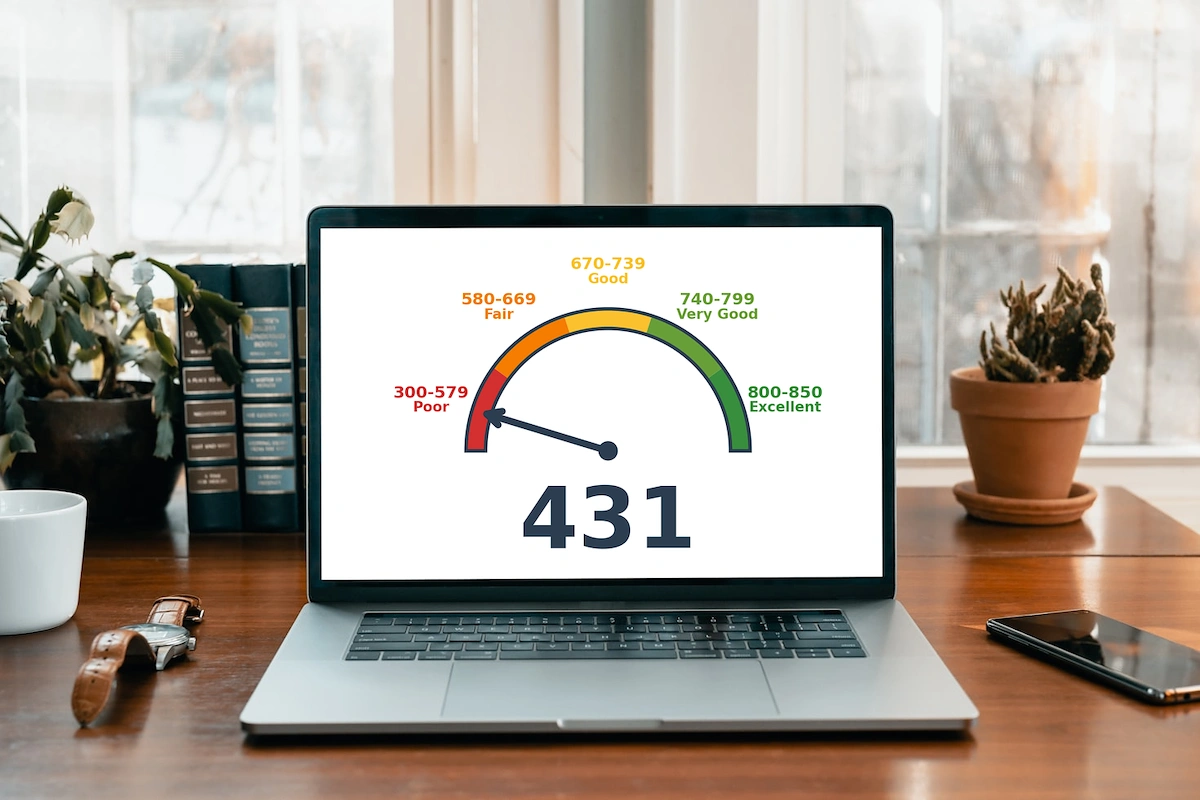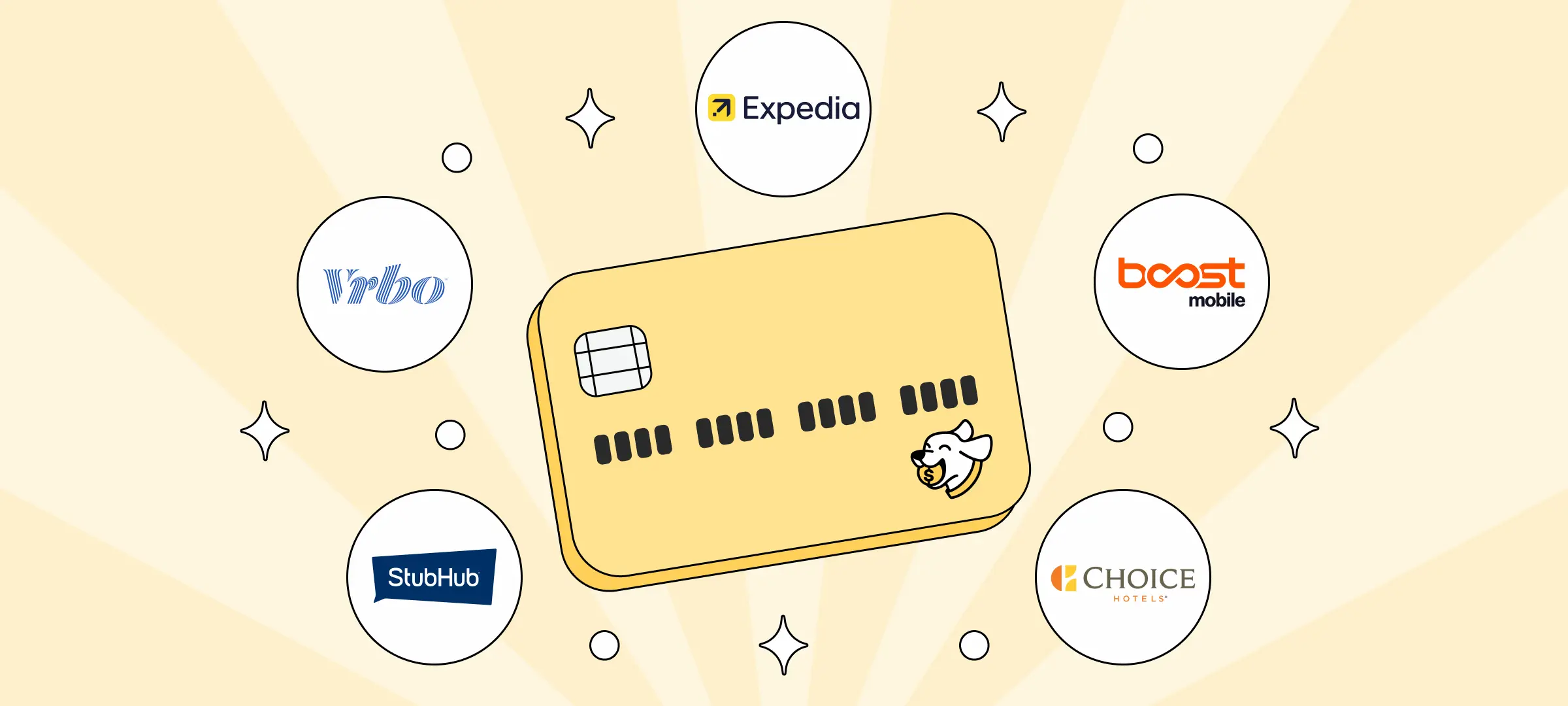
Kudos has partnered with CardRatings and Red Ventures for our coverage of credit card products. Kudos, CardRatings, and Red Ventures may receive a commission from card issuers. Kudos may receive commission from card issuers. Some of the card offers that appear on Kudos are from advertisers and may impact how and where card products appear on the site. Kudos tries to include as many card companies and offers as we are aware of, including offers from issuers that don't pay us, but we may not cover all card companies or all available card offers. You don't have to use our links, but we're grateful when you do!
431 Credit score: What You Need to Know in 2025
July 1, 2025


TL;DR
A 431 credit score offers a clear opportunity to begin building a healthier financial profile. This score falls into the 'Poor' FICO credit range, which provides a foundational starting point for significant improvement.
What Does a 431 Credit Score Mean?
A credit score of 431 falls squarely into the "poor" range of the FICO Score model, which spans from 300 to 850. Lenders view scores in this category as high-risk, often indicating a history of financial difficulties. This can create significant hurdles in your financial life, making it tough to get approved for new credit cards or loans. Any offers you do receive will likely come with very high interest rates and unfavorable terms, making borrowing an expensive proposition.
While this score presents immediate challenges, it is not a permanent financial sentence. It reflects past behavior, but your future credit health is something you can influence. Understanding the factors that led to this score is the first step toward building a stronger credit profile. Over time, it is entirely possible to improve your standing and gain access to more favorable financial opportunities and products.
Who Has a 431 Credit Score?
While a 431 credit score is considered poor for any age group, average credit scores show a clear upward trend with age. This isn't because age is a direct scoring factor, but rather that older consumers have had more time to build longer credit histories and establish a record of on-time payments. According to 2023 Experian data, here is the breakdown of average FICO scores by generation:
- Generation Z (ages 18-26): 680
- Millennials (ages 27-42): 690
- Generation X (ages 43-58): 709
- Baby Boomers (ages 59-77): 745
- Silent Generation (ages 78+): 760
Credit Cards With a 431 Credit Score
A credit score of 431 falls into the "poor" credit range, which can make qualifying for a new credit card a challenging endeavor. Most lenders view a score this low as an indicator of high risk, leading to a high probability of denial for standard unsecured cards. Consequently, your options will likely be restricted to secured credit cards that require a cash deposit or certain unsecured cards specifically designed for rebuilding credit, which often come with high fees and interest rates.
Kudos offers an AI-powered Explore Tool that can help you navigate these limited options by asking what you're looking for in a card, such as building credit or finding low interest rates. Based on your answers, it provides personalized recommendations from its database of nearly 3,000 cards, showing you how well each one aligns with your financial goals.
Auto Loans and a 431 Credit Score
A 431 credit score places you in the deep subprime category, which can make securing an auto loan difficult, though not impossible. You should expect to face some of the highest interest rates offered by lenders, significantly increasing the total cost of your vehicle.
According to a Q2 2025 market report, average auto loan rates vary dramatically by credit score:
- Super-prime (781-850): 5.25% for new cars and 7.13% for used cars.
- Prime (661-780): 6.87% for new cars and 9.36% for used cars.
- Non-prime (601-660): 9.83% for new cars and 13.92% for used cars.
- Subprime (501-600): 13.18% for new cars and 18.86% for used cars.
- Deep subprime (300-500): 15.77% for new cars and 21.55% for used cars.
Mortgages at a 431 Credit Score
With a 431 credit score, traditional mortgage options are generally out of reach. Mortgage requirements for most lenders start much higher; conventional loans typically require a score of at least 620. Even government-backed FHA loans, the most accessible option for poor credit, have a minimum score of 500, and that’s only with a 10% down payment. A 431 score falls significantly below these minimums, making qualification through standard lenders highly unlikely.
If you were able to find a specialty lender, a low credit score would lead to unfavorable loan terms. Lenders view low scores as high risk, resulting in much higher interest rates that can cost thousands more over the life of the loan. You would also face requirements for a larger down payment, higher insurance premiums, and potentially a lower cap on the amount you can borrow, which would limit your home-buying budget significantly.
What's in a Credit Score?
Understanding your credit score can feel like trying to solve a complex puzzle, as it's a blend of several key financial habits. The most common factors that determine your score include:
- Your payment history tracks whether you have paid past credit accounts on time.
- Credit utilization is the percentage of your available credit that you are currently using.
- The length of your credit history considers the age of your oldest account and the average age of all your accounts.
- Credit mix refers to the variety of credit products you have, such as credit cards, retail accounts, and loans.
- New credit inquiries and recently opened accounts can also temporarily impact your score.
How to Improve Your 431 Credit Score
Having a 431 credit score can feel discouraging, but it's entirely possible to rebuild your financial standing with proven methods. With consistent effort and the right strategies, you can see meaningful improvements in as little as three to six months.
- Monitor your credit reports. Regularly reviewing your reports allows you to spot and dispute inaccuracies that could be unfairly dragging down your score. This also helps you track your progress and see which positive habits are making an impact.
- Set up automatic bill payments. Your payment history is the single most important factor in your credit score, so even one late payment can cause significant damage. Automating payments ensures you’re always on time, which is a foundational step to rebuilding from a very poor score.
- Lower your credit utilization ratio. This ratio—the amount of credit you're using compared to your total limit—is the second-largest component of your score. Aim to keep your balances below 30% of your limit to show lenders you can manage debt responsibly.
- Apply for a secured credit card. If you're struggling to get approved for traditional credit, a secured card is an excellent tool for rebuilding. Because it requires a cash deposit as collateral, it's easier to obtain and allows you to establish a positive payment history as your activity is reported to the credit bureaus.
Using a tool like Kudos can help you manage your cards and maximize rewards as you work to improve your credit.

Supercharge Your Credit Cards
Experience smarter spending with Kudos and unlock more from your credit cards. Earn $20.00 when you sign up for Kudos with "GET20" and make an eligible Kudos Boost purchase.
Editorial Disclosure: Opinions expressed here are those of Kudos alone, not those of any bank, credit card issuer, hotel, airline, or other entity. This content has not been reviewed, approved or otherwise endorsed by any of the entities included within the post.


















.webp)








.webp)













